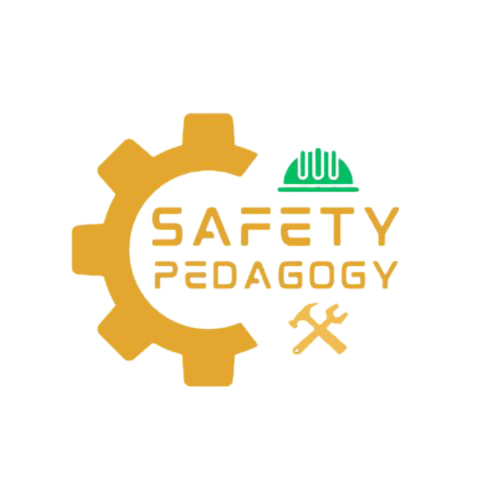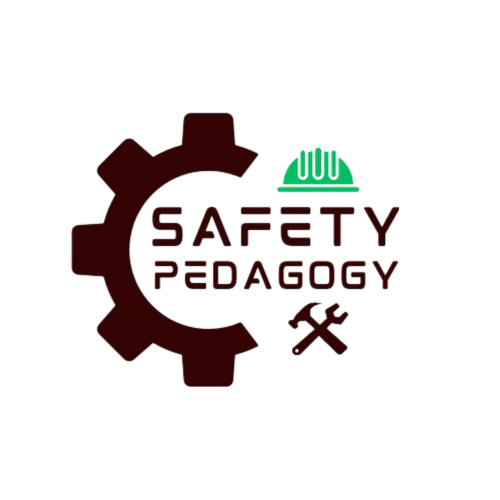Hot Works
Introduction
- Arc Welding
- Gas Cutting
- Grinding
- Drilling
- Sand Blasting
Mechanism: It is a type of welding that uses a welding power supply to create an electric arc between a metal stick (electrode) and the base material to melt the metals at the point of contact. Arc welders can use either direct (DC) or alternating (AC) current, and consumable or non-consumable electrodes.

Hazards: heat, flame, dust, rust, mist, shock.
PPE: safety shoes, safety helmet, face shield, goggles, hand gloves.
Precautions:
- Take hot work permit.
- The area must be inspected before work commence.
- Flammable materials shall not to be present at work area.
- In any flammable material occurrence held then it should be removed from workplace, or a shield should be created.
- The welder must be trained and must use required PPEs.
- The electrode studs (residue) shall be kept in separate container.
Gas Cutting
Cutting a plate or pipe by means of “Dissolved Acetylene” (DA) and “Oxygen” is called gas cutting. It can also be done by hand torch or PUG machine. If DA is not available, then “LPG Industrial” can also be used.
Hazards: heat, flame, dust, rust, mist.
PPE: safety boots, safety helmet, face shield, goggles.
Precautions:
- Take hot work permit.
- The area must be inspected before work commence.
- Flammable materials shall not to be present at work area.
- The hose must be connected to cylinder by clamps.
- Flashback arrest must be lifted near cutting torch.
- Regulation must be ISI standards.
- The welder must be trained and must use required PPEs.
Grinding is an abrasive machining process that uses a grinding wheel or grinder for taking layer of materials and cutting or sharpen tools.
Hazards: spark, dust, rust, NIP point.
PPE: helmet, gloves, apron, goggles.
Precautions:
- Take hot work permit.
- Workmen should wait till grinder machine acquires its full speed.
- Touch material gentle or slowly by grinder machine initially.
- Grinding machine consists of abrasive material.
- Inspect the wheel position prior commence work, if found any fault change it.
Drilling is a cutting process that uses a drill bit to cut a hole of circular cross-section in solid materials. The drill bit is usually a rotary cutting tool.
Hazards: heat, spark, shock, hot chips.
PPE: helmet, boots, gloves, goggles, wire brush.
Precautions:
- Take hot work permit.
- Inspect drill machine prior use.
- Drill bit should be erected in the Chuck and to be tighten properly.
- Make sure regarding the bit is running straight before starting work.
- Remove bit post completion of work.
- Never touch or clean hot chips with hands, always use brush.
Sand Blasting is the act of propelling very fine particles of an abrasive materials at high velocity toward a surface in order to clean rust or paint. Sand Blasting is often used as a way to prepare a surface prior to painting.
Hazards: heat, sand, old rust, paint.
PPE: helmet, full cover of body, safety shoes.
Precautions:
- Take hot work permit.
- Machine outlet should be kept to the safe side.
- When not in use machine should shut off.
- Should be operated slowly towards the tank.
Note: Automatic shut off valve is available in Sand Blasting machines.
Hot Work Execution for Welding and Cutting
Hazards: Fire, Explosion, Eye injury, Body burn, etc.
General Requirements
- The procedure has to be implemented by all Departmental Heads with the help of heir authorized representatives at workplace and is also applicable for Contractor’s employees.
- Toolbox Talk to be conducted by Safety Officer or equivalent prior work commence.
- Work permit in Form shall be issued to working agency before start of gas cutting/welding, by the authorized person of the department.
- If the Gas cutting / welding job is to be carried out at height (more than 2 meters from ground level) / in confined space / gaseous hazardous area/ near electrical installation, separate work permit should be obtained from the authorized person (i.e. Safety Officer).
- Test the area for flammables before welding and cutting when the atmosphere is vulnerable to such hazards.
- Ensure after completion of the job, the cylinders, hose pipe, torch, cables, spatters, etc. are properly removed and kept at its designated place.
- After completion of the job, the work permit shall be returned by the working agency and the receiving authority of department shall enter the form in the original along with the white copy.
a) Gas Welding & Cutting
1. Transporting, moving and storing compressed Gas Cylinders:
Refer the general procedure of handling and storage of Gas Cylinder and take following precautions:
i) Valve protection caps shall be in place and secured.
ii) When cylinder is hoisted, they shall be secured on a cradle, sling board or pallet. They shall not be hoisted or transported by means of magnets or choker slings.
iii) Cylinder shall be moved by tilting and rolling them on their bottom edges. They shall not be intentionally dropped, struck or permitted to strike each other violently.
iv) When cylinder is transported by powered vehicles they shall be secured in a vertical position.
v) Valve protection caps shall be used for lifting cylinders from one vertical position to another.
vi) When a job is finished, when cylinders are empty or when cylinders are moved, at any time the cylinder valve shall be closed.
vii) The compressed has cylinder shall be secured in an upright position at all times except, for short periods of time while cylinders are actually being hoisted or carried.
2. Placing Cylinders
i) Cylinder shall be kept far enough away from the actual welding or cutting operation so that sparks, hot slag or flame will not reach them.
ii) Cylinders shall be placed where they cannot become part of an electrical circuit.
iii) Cylinders containing oxygen or acetylene, or other fuel gas shall not be taken into confined spaces.
3. Treatment of cylinders
i) Cylinder, whether full or empty, shall not be used as rollers or supports.
ii) No person other than the gas supplier shall attempt to mix gases in a cylinder. No one except the owner or the person authorized by the owner, shall refill a cylinder.
iii) No damaged or defective cylinder shall be used.
Rest in Part 2…..
4. Use of fuel gas.
5. Fuel gas and oxygen manifolds.
6. Hose.
7. Torches.
8. Regulators and gauges.
9. Oil and grease hazards.
b) Arc Welding and Cutting
1. Manual electrode holders
2. Welding cables and connectors
3. Ground returns and machine grounding
4. Operating instructions
5. Shielding
6. Employee protection
c) Protective clothing
1. General requirements
2. Specified protective clothing


Great blog!!!! Thanks for sharing the very informative information with us. In this blog, you have shared brief information about Shot Blasting Machine and many more. Surface International is also working in the same field. Keep sharing more blogs.
Dear Reader / Aspirants,
Safety Pedagogy welcomes your comments which:
1. Motivates us to grow this platform,
2. Direct / Guide us to move ahead,
3. Evaluation pertaining to article's discrepancies,
4. To connect each aspirants together,
So please do comment us…..
Thank You…..